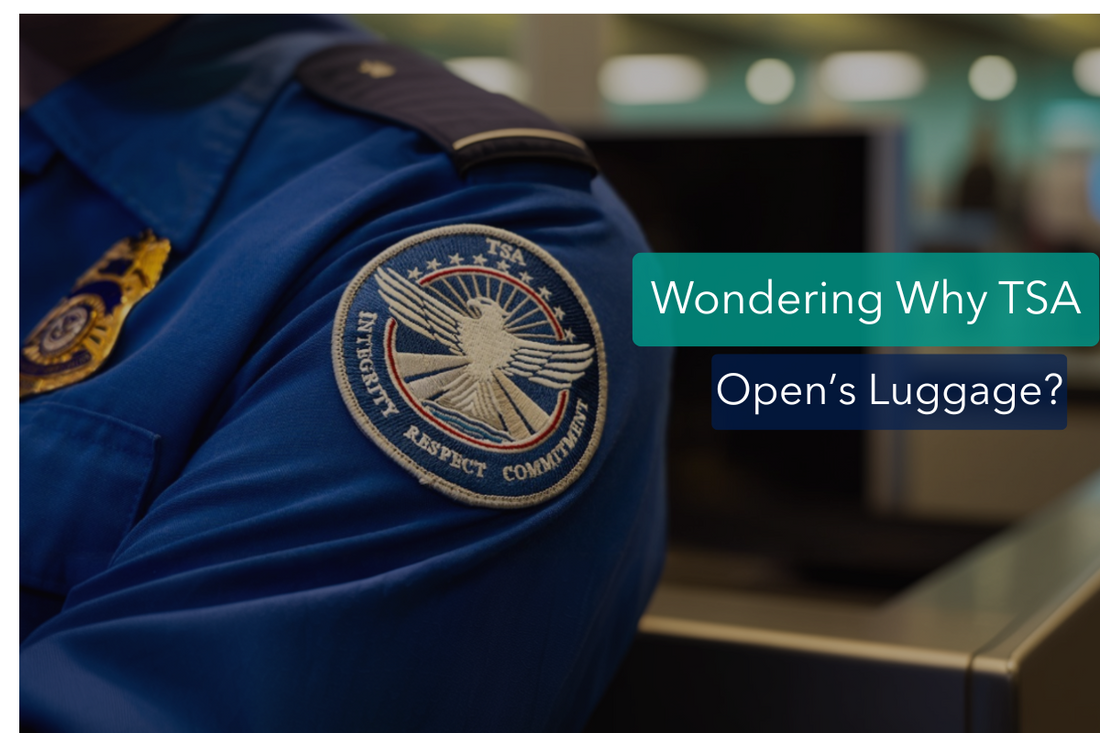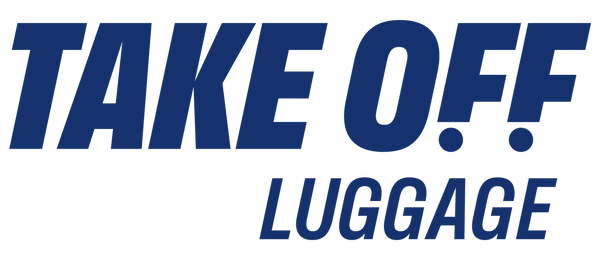
Why TSA would open my luggage ? Everything you need to know
Share
Table of Contents
- Introduction
- Understanding TSA Luggage Inspections
- Top Reasons Why TSA Might Open Your Luggage
- TSA Inspection Procedures
- Does TSA Lock or Relock My Luggage After Inspection?
- Best Practices for Securing Luggage During Air Travel
- Tips to Minimize the Chances of TSA Opening Your Luggage
- What to Do If Items Are Missing or Damaged After TSA Inspection
- Conclusion
- Frequently Asked Questions (FAQs)
Introduction

When traveling by air, it’s common to wonder why the Transportation Security Administration (TSA) might open your luggage. Whether you're flying domestically or internationally, ensuring the safety of passengers and crew is TSA’s top priority. As part of their strict security protocols, TSA agents may need to inspect checked and carry-on luggage, even after it has been screened by advanced scanning equipment.
Luggage checks are essential because they help prevent dangerous or prohibited items from boarding the plane. While most travelers pass through security without issue, certain factors—like suspicious items on an X-ray or improperly packed bags—may prompt a manual inspection. TSA's goal isn’t to inconvenience travelers but to safeguard flights against potential threats.
In this blog, we’ll explain why TSA might open your luggage, how they decide which bags to inspect, and what you can do to minimize the chances of additional screenings. We’ll also cover TSA’s procedures, how to know if your bag has been inspected, and best practices for packing to avoid delays. Whether you're a frequent flyer or preparing for your first trip, understanding TSA’s luggage inspection process can make your journey smoother and more predictable.
Prohibited or Restricted Items
One of the most common reasons TSA may open your luggage is the presence of prohibited or restricted items. While most travelers are aware of basic guidelines, it’s easy to forget or overlook certain rules, especially when packing in a hurry.

Common Items That Trigger Inspections:
- Liquids Over 3.4 oz: In carry-on luggage, any liquid container exceeding the 3-1-1 liquids rule will be flagged. TSA agents will manually check your bag to verify the contents.
- Sharp Objects: Items like scissors, pocket knives, or even certain tools are prohibited in carry-ons and can trigger inspections in checked bags.
- Aerosols and Gels: Non-compliant aerosols, gels, or pressurized containers often warrant further inspection.
- Flammable or Hazardous Materials: Items like lighters, fireworks, or certain chemicals are strictly prohibited and can result in your bag being opened.
Helpful Resource: Before packing, always consult TSA’s Prohibited Items List to ensure you’re following guidelines. This official resource provides an up-to-date list of items allowed in carry-on and checked luggage.
Unusual or Dense Packing

The way you pack your bag can also impact whether TSA selects it for a manual inspection. Overpacking or placing items irregularly can make it difficult for scanners to get a clear view of the contents, leading TSA agents to open the luggage for further examination.
Why Overpacking Causes Suspicion:
When a bag is packed too tightly, it can create dense areas that block X-ray penetration, obscuring the view of what’s inside. Even harmless items can look suspicious if densely packed together. For instance, layering books, electronics, and clothing can create dark spots on the scanner, prompting agents to inspect the bag.
Tips for Packing Smartly:
- Distribute Items Evenly: Spread out dense items to avoid creating hotspots in your bag.
- Use Packing Cubes: These help organize your belongings and keep everything visible on the scanner.
- Keep Electronics Accessible: Place laptops, tablets, and chargers near the top or in easy-to-reach compartments, especially for carry-ons.
- Avoid Clutter: A cluttered bag can appear suspicious and is more likely to be flagged for inspection.
Food and Liquids

Many travelers are surprised to learn that certain foods and liquids can trigger TSA inspections. Although food is generally allowed in both carry-on and checked luggage, some items can appear suspicious on X-ray machines.
Why Food Triggers Inspections:
Foods with dense or opaque textures—like cheeses, peanut butter, or wrapped candies—can block the scanner's view, making it hard for agents to determine what they’re seeing. Large quantities of food items or irregular packaging may also raise concerns.
Rules Around Carrying Food and Liquids:
- Liquids and Gels: The 3-1-1 liquids rule applies to all liquids, gels, and aerosols. Items like yogurt, hummus, or creamy cheeses fall under this rule and should be packed in containers no larger than 3.4 oz for carry-ons.
- Solid Foods: Solid foods are generally allowed, but dense or oddly shaped items might trigger additional screening.
- International Travel: Be mindful of agricultural restrictions when traveling internationally, as certain foods may not be permitted across borders.
Electronics and Batteries

Electronics and batteries are among the most scrutinized items in airport security. Whether in your carry-on or checked luggage, improper packing of these items can lead to TSA opening your bag.
Special Screening for Electronics:
TSA requires passengers to remove large electronics—like laptops and tablets—from their carry-ons during screening. This allows agents to get a clearer image without interference from other items. In checked luggage, electronics may appear as dense blocks on X-rays, prompting agents to open the bag for a manual check.

Lithium Batteries and Power Banks:
- Lithium batteries, particularly those with a high watt-hour rating, pose a fire risk and are subject to strict regulations.
- Spare lithium batteries must be packed in carry-ons and are prohibited in checked bags.
- Power banks over certain capacities (typically 100Wh) may not be allowed onboard or require airline approval.

For Detailed information Visit Airlines Passenger and Batteries Page on FAA's (Federal Aviation Administration) Official Website
Proper Packing Tips for Electronics:
- Use protective cases for laptops, tablets, and cameras.
- Organize chargers and cables to prevent them from looking like tangled masses, which can appear suspicious.
- Label power banks with their capacity to ensure they comply with airline rules.
By following TSA guidelines and packing electronics correctly, you can avoid delays and reduce the chances of a manual inspection.
TSA Inspection Procedures

Understanding TSA’s inspection process can help ease concerns and ensure you're prepared when traveling.
TSA Notification of Baggage Inspection

If TSA opens your checked luggage for inspection, they will place an official “TSA Notification of Baggage Inspection” slip inside. This slip informs you that your bag was inspected as part of their standard security procedures.
How to Identify TSA Inspections vs Unauthorized Access
- Presence of TSA Slip: Confirms a TSA agent opened and inspected your bag.
- Missing Items: If items are missing but no slip is present, this could indicate unauthorized access.
- Improper Repacking: While TSA aims to repack carefully, rushed inspections might leave your bag dis-organized.
Does TSA Lock or Relock My Luggage After Inspection?
TSA agents are trained to relock luggage after inspections, but this is only possible if you use TSA-approved locks.
TSA-Approved Locks: What Are They and Why Use Them?
- Universal Access: TSA-approved locks can be opened by agents using a universal master key.
- Prevents Damage: Without a TSA-approved lock, agents may cut non-compliant locks, leaving your bag unsecured.
- Relocking Capability: Agents can relock TSA-approved locks post-inspection to keep your belongings safe.
Best Practices for Securing Luggage During Air Travel
Follow these tips to protect your belongings and avoid complications during TSA inspections:
- Use High-Quality Luggage: Durable luggage reduces the risk of damage during handling and inspections.
- Label Your Bags: Include both external and internal identification tags.
- Place Valuables in Carry-Ons: Avoid packing expensive or irreplaceable items in checked luggage.
- Utilize Luggage Straps: They provide an extra layer of security and help keep your bag closed during transit.

Tips to Minimize the Chances of TSA Opening Your Luggage
- Pack Neatly: Well-organized bags are easier for scanners to assess, reducing the need for manual inspections.
- Avoid Prohibited Items: Double-check TSA’s prohibited items list before packing.
- Use Clear Bags for Liquids: Adhere to the 3-1-1 rule for carry-on liquids to avoid delays.
- Keep Electronics Accessible: Place laptops and tablets in easily reachable compartments.
What to Do If Items Are Missing or Damaged After TSA Inspection
If you discover missing or damaged items after a TSA inspection, follow these steps:
Filing a Claim with TSA:
- Document Everything: Take photos of your bag and missing/damaged items.
- Visit TSA’s Website: Use their claims portal to file a report.
- Include Supporting Evidence: Receipts, photos, and the TSA inspection slip can strengthen your claim.
- Follow Up: Monitor your claim status and follow up as needed.
For more information on Missing or Damager items after TSA inspection , Visit Lost and Found page on TSA's official website.
Conclusion
While TSA inspections can sometimes be inconvenient, they are essential for ensuring the safety of all passengers. By understanding the inspection process, packing smartly, and using TSA-approved locks, you can reduce the likelihood of your luggage being opened and protect your belongings throughout your journey.

